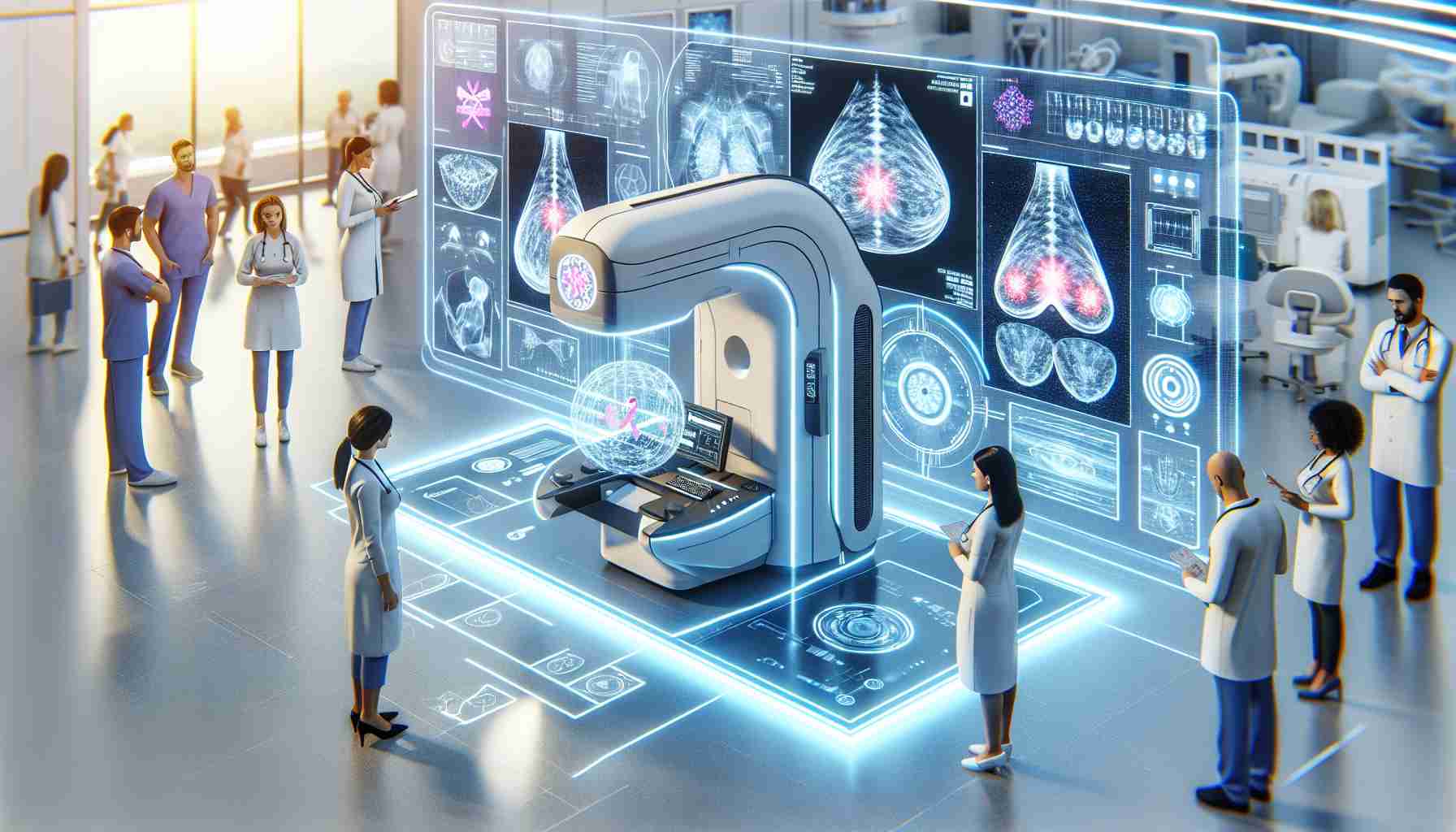Mammography stands as a pivotal tool in female healthcare, primarily utilized for breast cancer detection. This advanced imaging technique is integral not only in routine screenings but also within hospital settings. In particular, expert radiologists like Dr. Franken are closely monitoring the advancements in artificial intelligence that are set to revolutionize the field.
With years of experience in specialized breast cancer care, Dr. Franken recognizes the significant shift towards incorporating AI technologies. He emphasizes that the medical community has recently reached a consensus on the importance of integrating these innovations into standard practices, thus enhancing patient care. The urgency arises from the alarming statistic that approximately one in seven women will face breast cancer, with thousands succumbing to this disease annually in the Netherlands.
In the evolving landscape of mammography, both Dr. Franken and Dr. De Jong advocate for a collaborative approach between AI and human expertise. Their perspective dispels fears surrounding AI potentially replacing medical professionals. Instead, they visualize AI as a supportive tool—enhancing the radiologist’s capabilities while ensuring human oversight remains paramount in decision-making processes.
As advancements continue, the anticipation surrounding this technology grows, promising to bolster diagnostic accuracy and patient confidence. With studies indicating AI’s ability to match seasoned radiologists in identifying cancerous formations, the future of breast cancer screening is set to facilitate a more reliable and efficient examination process.
Secrets of Breast Cancer Awareness and Mammography
Mammography is an essential part of women’s health, but understanding how to navigate this important screening can make the experience even more beneficial. Here are some tips, life hacks, and interesting facts that can enhance your knowledge and preparation for mammograms and breast health.
1. Understand the Importance of Schedule and Frequency
It’s crucial to adhere to suggested screening schedules. For women aged 40 and older, annual mammograms can significantly aid in early detection, which is vital since early-stage breast cancer has a higher survival rate. Keep a reminder in your calendar or smartphone to ensure you never miss your appointment.
2. Prepare for Your Appointment
Before your mammogram, consider these tips: avoid using deodorants, lotions, or perfumes on the day of your appointment, as they can interfere with the imaging results. Wear a two-piece outfit to allow easy access while maintaining comfort.
3. Bring a List of Medications
Inform your radiologist of any medications you’re taking, as certain medications can affect breast density. A transparent conversation about your health history can improve the effectiveness of your screening.
4. Understand How AI Enhances Diagnosis
Recent advancements in artificial intelligence are transforming mammography. AI can assist radiologists by analyzing images and marking potential areas of concern, improving the accuracy of diagnoses. By understanding this technology, patients can be more confident in their care.
5. Stay Informed and Engaged
Education is vital. Join support groups or online forums related to breast cancer awareness. Many organizations provide valuable resources and education on the latest in breast health. You can find more information at National Breast Cancer Foundation.
6. Explore Additional Screening Options
While mammograms are crucial, they are not the only tool. Depending on your risk factors, your doctor may recommend additional screenings such as ultrasounds or MRIs for more comprehensive assessments. Discuss all available options with your healthcare provider.
Interesting Fact: The Evolution of Mammography
Did you know that mammography has evolved dramatically since its inception? The first mammography units were developed in the 1960s. Now, state-of-the-art digital mammography and 3D imaging techniques significantly improve detection rates and patient comfort.
7. Encourage Regular Self-Exams
In addition to regular screenings, women should perform monthly self-exams to familiarize themselves with their bodies and identify any unusual changes. Report these changes to your healthcare provider immediately.
8. Utilize Support Resources
Engaging with local and national breast cancer organizations can provide invaluable support for both patients and survivors. Resources are available for education, support groups, and access to healthcare professionals. An excellent resource for support is Cancer.org.
9. Share Your Knowledge
Your experience can help others. Encourage friends and family to talk openly about breast health and the importance of mammography. Awareness can lead to early detection and potentially save lives.
10. Celebrate Awareness Initiatives
Participate in breast cancer awareness events such as the Pink Ribbon Walks and local fundraising activities. These not only raise funds for research but also create community solidarity and support for those affected by breast cancer.
Understanding and advocating for breast health is essential for female empowerment. By implementing these tips and staying informed, you can take charge of your health journey and contribute positively to the awareness of breast cancer detection and care.








